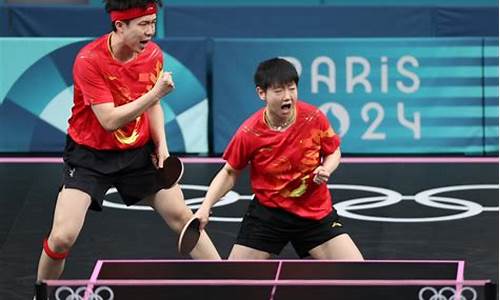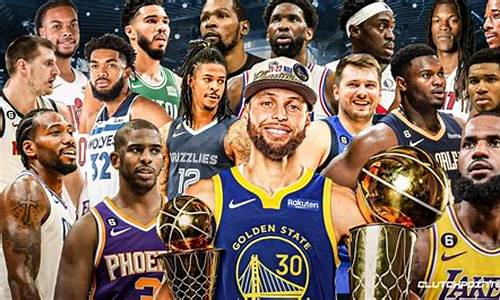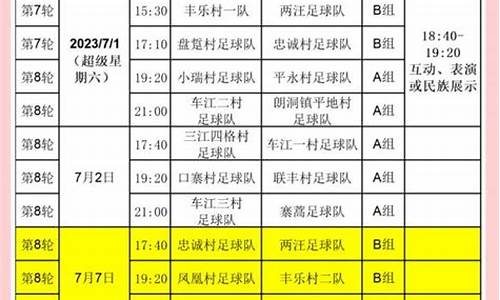1.简述篮球运动的发展史
2.nba发展史2000至今
3.NBA全明星赛的发展史
4.nba什么时候开打
5.篮球发展史英语简介
6.NBA的发展史,英文的,字数越多越好啊

NBA历史
NBA是National Basketball Association的缩写(国家篮球协会)。成立于1946年6月6日。成立时叫BAA,即全美篮协会(Basketball Association of America),是由十一家冰球馆和体育馆的老板为了让体育馆在冰球比赛以外的时间,不至于闲置而共同发起成立的。BAA成立时共11支球队:纽约尼克斯队、波士顿凯尔特人队、华盛顿国会队、芝加哥牡鹿队、克利夫兰叛逆者队、底特律猎鹰队、费城武士队、匹兹保铁人队、普罗维登斯蒸气队、圣路易斯轰炸机队和多伦多爱斯基摩人队。1949年BAA吞并了当时的另外一个联盟(NBL),并改名为NBA。1949-50赛季,NBA共17支球队。16年NBA吞并了美国篮球协会(ABA),球队增加到22支。1980年达拉斯小牛队加入NBA。1988年,夏洛特黄蜂队和迈阿密热火队加入NBA。1990年奥兰多魔术队和明尼苏达森林狼队加入NBA。1995年两支加拿大球队加入NBA,多伦多猛龙队和温哥华灰熊队,使NBA的球队达到29支.2004年,夏洛特山猫队加盟NBA,是球队总数达到了30。
$NBA的由来
1891年,美国人詹姆士·奈什密斯博士在麻省的春田学院,为了给学生们找一个冬季体育锻炼的方式,在1891年用2只破筐和一只代用的足球创造了篮球运动,这才有了今天如火如荼的NBA。而NBA在1946年6月6日诞生时,有一个我们陌生的名字BAA。
NBA的出现和发展是篮球运动前五十年积累和沉淀。自从1891年,篮球运动被詹姆士·奈什密斯博士发明之后,1898年,美国新泽西州特伦顿的一支球队用25美元租用了当地一家礼堂比赛并向观众售票。在赛后的分红中队长库珀组织比赛有功,首先领到了1美元。这场“有偿篮球赛”被不列颠大百科全书认定为第一场“职业篮球赛”。
特伦顿比赛之后,“有偿比赛”在全美迅速展开。为了保护参加“有偿比赛”选手的利益, 1898年各地的球队成立了第一个职业篮球组织--“国家联盟”(NBL)。由于各球队经济实力和技术水平相差甚远,加上没有成熟的市场运作经验和规则,NBL仅仅经过三四个赛季便名存实亡了。30年代,NBL在一些中小城市中复苏,进行一些规模不大的联赛。但是由于缺乏足够的资金来推广促销,篮球的影响力始终没有形成。
1945年,第二次世界大战刚刚结束,寂寞已久的体育经纪人看准了这一点,他们联络11支球队老板,发起成立了BAA这个组织。BAA是NBA的前身,NBA的真正生日应该是1946年6月6日,这一天,纽约中央车站附近的“舰长饭店”里,BAA(BOSKETBALL ASSOCIATON OF AMERICA)--全美篮球协会的 “亚当”和“夏娃”们召开了成立大会,会议确定11支参赛球队和每队要进行60场常规赛。
BAA由十一家冰球馆和体育馆的老板们共同发起成立,初衷是为了让体育馆在冰球比赛以外的时候不至于空闲冷场。这些体育馆的老板们对于经营体育场是行家里手,他们针对NBA“国家篮球联盟”的球队多集中在中西部地区一些中、小城市的现实情况提出一定要在当时的大城市内建立当地有名球队,建立一个全国范围的篮球组织的概念。在常规赛季中,每个联盟内部的球队要打两个主客场,和另一个联盟的球队要打一个主客场。最后按成绩好坏排队出进入季后赛的名次,只有进入季后赛才有希望夺得总冠军。BAA用4节共48分钟制,人盯人防守并禁止联防。至今这些仍然是NBA区别于业余篮球的最基本特征。
BAA的发起人之一,波士顿花园体育馆的老板沃尔特·阿布郎同时提出新的职业篮球概念,即职业篮球必须有雄厚的财力支援,一名选手只能为一家俱乐部效力并要签订严格的合同,联赛还要建立选手储备制。这些理论贡献在于将巨额资金和法制制约引入篮球,为日后的NBA的发展奠定了高薪制和合同制这两大基石。
1949年,随着BAA吞并NBL后,为了避免可能引起的法律上的麻烦,正式改名为NATIONAL BASKETBALL ASSOCIATION,即NBA。
NBA最伟大的10支球队
★(1)、波士顿凯尔特人队(1964-1965赛季)
总成绩62胜18负,胜率77.5%。主力阵容 有比尔·拉塞尔、萨姆·琼斯、哈夫利切克、桑 德斯和海因索恩。该队突破了本队单赛季获胜场 次的最高纪录,并随后获得了连续第七个总冠 军。
★(2)、费城76人队(1966-1967赛季)
总成绩68胜13负,胜率84.0%,主力阵容 为张伯伦、格里尔、沃克和坎宁安,创下了NBA 单赛季获胜最高纪录。在东部决赛中击败了凯尔 特人队,结束了“波士顿王朝”的8连冠纪录, 并击败金州勇士队获总冠军。
★(3)、纽约尼克斯队(1969-10赛季)
总成绩60胜22负,胜率73.2%。主力阵容 有里德·费雷泽、巴特内特·德布歇和布拉德利。 受伤的里德在总决赛第七场之前突然出现在赛 场,这一着被称为反施“空城计”,令对手猝防 不及,最后击败湖人队夺冠。
★(4)、洛杉矶湖人队(1982-1983赛季)
总成绩69胜13负,胜率84.1%。主力阵容 有古德里奇、韦斯特、张伯伦、麦克米伦和海尔 斯顿。该队创下33连胜纪录和69场胜利的纪录, 并击败纽约尼克斯队夺冠。
★(5)、费城76人队(1982-1983赛季)
总成绩65胜17负,胜率79.3%。主力阵容 有摩西·马龙、“J博士”朱利叶斯·欧文、托 尼、奇克斯和鲍勃·琼斯。由于76人队直接进入 半决赛,所以每轮都是7战4胜。马龙在复赛前发 誓说:“FO!FO!FO!”,“FO”就是“FOUR” (四),意思是76人队将全部以4:0过关斩将夺 得冠军。结果马龙的预言只差一场,他们在半决 赛中4:0横扫对手后,在东部决赛中只输给雄鹰 队一场,最后又以4:0击败湖人队夺得总冠军。 后每一位选手在他们的冠军戒措上刻上“FO”的 字样。
★(6)、波士顿凯尔特人队(1985-1986赛季)
总成绩67胜15负,胜率81.7%。主力阵容 有拉里·伯德、帕里什、麦克黑尔、丹尼·安 吉、丹尼斯·约翰逊和比尔·沃尔顿。该队创造 了40胜1负的NBA主场最佳纪录,总决赛击败湖人 队后夺冠。
★(7)、洛杉矶湖人队(1986-1987赛季)
总成绩65胜17负,胜率79.3%。主力阵容 有“魔术师”约翰逊、贾巴尔、詹姆斯·沃西、 拜伦·斯科特、A.C格林和库柏。复赛中湖人队 前12场只输一场,并击败凯尔特人队夺冠。
★(8)、底特律活塞队(1988-1989赛季)
总成绩63胜19负,胜率76.8%。主力阵容 有托马斯、杜马斯、兰贝尔、罗德曼、阿吉尔和 温尼·约翰逊等。这是NBA历史上防守最强的一 支球队。作风粗犷,被称为“坏小子球队”。该 队因缺少有威胁的中锋,派出了少有的3后卫阵 容,总决赛4:0横扫湖人队夺冠。
★(9)、芝加哥公牛队(1991-1992赛季)
总成绩67胜15负,胜率81.7%。主力阵容 有乔丹、皮蓬、格兰特、阿姆斯特朗、卡特莱特 和帕克森。这一届公牛队比1990-1991赛季多胜 出6场,也是乔丹状态最好的赛季之一,总决赛 4:2击败开拓者队夺冠。
★(10)、芝加哥公牛队(1995-1996赛季)
总成绩72胜10负,胜率87.8%。主力阵容 有乔丹、皮蓬、罗德曼、哈珀、朗利和库科奇。 整个赛季100场比赛中他们胜78场,创造了常 规赛取胜场次的NBA新纪录。他们的“三角进功 战术”在NBA独一无二,也是NBA历史上防守 最强的球队之一。总决赛中,他们4:2力克西 雅图超音速队夺冠。
$NBA之最
★冠军戒指之最
在1957年-1969年的13个赛季里,比尔.拉赛尔带领波士顿凯尔特人队获得11次NBA总冠军,他也因此获得11枚NBA冠军戒指,是NBA历史上获得NBA冠军戒指最多的人。
★加时赛之最
1951年11月2日,罗切斯特队,经过6个加时赛,最终以75比73战胜了印第安纳队。
★三分球纪录
NBA历史上,单场比赛个人3分球纪录由魔术队的斯科特于1996年东部决赛中创造。全场比赛,他共投中11个3分球。
单场比赛全队3分球纪录由超音速队在1995-1996年季后赛同火箭队的第二场比赛中创造,共投进20个3分球(出手27次)。
单个赛季中个人3分球命中率最高的是公牛队的后卫史蒂夫.科尔,为52.4%。他获得1996年和19年NBA远投赛的冠、亚军。
★身材最高和最矮者
NBA历史上身材最高的球员是前华盛顿队的曼纽特.博尔(扎伊尔籍)和现役奇才队中锋吉莱赫.缪里森(罗马尼亚籍),均为2.31米,身材最矮的则为现役球员蒂尼.博格斯,仅有1.60米。
$NBA历届"年度最佳教练"
年度 最佳教练 (英文名) 球队
1962-1963 哈里.加勒廷 Harry Galltin 圣路易斯鹰队
1963-1964 亚历克斯.汉纳姆 Alex hannum 旧金山勇士队
1964-1965 里德.奥尔巴克 Red Anerbach 波士顿凯尔特人队
1965-1966 多尔夫.谢伊斯 Dolph Schayes 费城76人队
1966-1967 约翰尼.科尔 Johnny Kerr 芝加哥公牛队
1967-1968 里奇.格林 Ricaie Genrin 圣路易斯鹰队
1968-1969 吉恩.许 Gene Shue 巴尔的摩队
1969-10 里德.霍尔兹曼 Red Holzman 纽约尼克斯队
10-11 迪克.莫塔 Dick Mootta 芝加哥公牛队
11-12 比尔.沙尔曼 Bill Sharman 纽约尼克斯队
12-13 汤姆.海因索恩 Tom Heinsohn 波士顿凯尔特人队
13-14 雷.斯科特 Rag scott 底特律活塞队
14-15 菲尔.约翰逊 Phil Johnson 塔萨斯奥马哈队
15-16 比尔.菲奇 Bill Fitch 克利夫兰骑士队
16-17 汤姆.尼萨尔科 Tom Nissalke 休斯敦火箭队
17-18 赫彼.布朗 Hubie Brown 亚特兰大鹰队
18-19 科顿.菲茨西蒙斯 Cotton Fitzsimmons 堪萨斯奥马哈队
19-1980 比尔.菲奇 Bill Fitch 波士顿凯尔特人队
1980-1981 杰克.麦金尼 Jack McKinney 印第安那步行者队
1981-1982 吉恩.许 Gene Shue 华盛顿队
1982-1983 唐.奈尔逊 Don Nelson 密尔沃基雄鹿队
1983- 弗兰克.雷登 Frank Layden 犹他爵士队
-1985 唐.奈尔逊 Don Nelson 密尔沃基雄鹿队
1985-1986 迈克.费雷特诺 Mike Fratello 亚特兰大鹰队
1986-1987 迈克.舒勒 Mike Schuler 波特兰开拓者队
1987-1988 唐.莫 Dong Moe 丹佛掘金队
1988-1989 科顿.菲茨西蒙斯 Cotton Fitzsimmons 凤凰城太阳队
1989-1990 帕特.赖利 Pat Riley 洛杉矶湖人队
1990-1991 唐.钱尼 Don Chaney 休斯敦火箭队
1991-1992 唐.奈尔逊 Don Nelson 金州勇士队
1992-1993 帕特.赖利 Pat Riley 纽约尼克斯队
1993-1994 伦勒.威尔肯斯 Lenny Wilkens 亚特兰大鹰队
1994-1995 德尔.哈里斯 Del Harris 洛杉矶湖人队
1995-1996 菲尔.杰克逊 Pil Jackson 芝加哥公牛队
1996-19 帕特.赖利 Pat riley 迈阿密热队
注:获得最佳教练次数最多的是唐.奈尔逊和帕特赖利(3)次。
$NBA退休球衣号码
球衣号 人名所属球队
1 沃尔特.布朗 凯尔特人队
6 比尔.拉赛尔 凯尔特人队
17 约翰.哈夫利切克 凯尔特人队
18 杰姆.洛斯托夫 凯尔特人队
4 杰里.斯隆 公牛队
10 鲍勃.洛夫 公牛队
23 迈克尔.乔丹 公牛队
9 鲍勃.佩蒂特 鹰队
2 亚利克斯.英格利希 掘金队
11 伊赛亚.托马斯 活塞队
21 戴夫.宾 活塞队
16 阿尔文.阿特莱斯 金州勇士队
45 罗迪.汤约诺维奇 火箭队
13 威尔特.张伯伦 湖人队
22 埃尔金.贝勒 湖人队
32 约翰逊湖人队
33 贾巴尔湖人队
3 德拉让.彼德洛维奇 网队
32 朱利叶斯.欧文 网队
12 迪克.巴尼特 尼克斯队
15 埃尔.门罗 尼克斯队
19 威力斯.里德 尼克斯队
14 约翰.麦格库伦 雄鹿队
6 朱利叶斯.欧文 76人队
5 迪克.文.阿斯代尔太阳队
42 康尼.霍金斯 太阳队
20 莫里斯.卢卡斯 开拓者队
7 皮特.马拉维奇 爵士队
$场上五虎各司其职 NBA场上球员位置介绍
★控球后卫(PG)
控球后卫(Point Guard)是球场上拿球机会最多、掌握比赛、组织进攻的人。他们要把球从后场安全地带到前场,再把球传给其他队友,给队友创造得分的机会。助攻是他们的首要工作,控球后卫在赛场上扮演的角色就象执导一场精彩演出的导演。
一名合格的控球后卫,首先要有出色的运球能力,能将球顺利带过半场;其次,还要有很好的传球能力。控球后卫要让球流动得顺畅,他们要能将球传到最容易得分的地方。
控球后卫往往是队上最后一个得分者,除非其队友都没有好机会出手,否则他是不轻易投篮的。即使有着很强的得分能力,控球后卫的目标也是以自己的得分能力破坏对方的防守,从而为队友制造得分机会。
控球后卫的准则是:当场上有任何队友的机会比他好时,他一定将球交给机会更好的队友。所以,除非是很好的投篮机会,控球后卫是不会出手投篮的,这样对控球后卫命中率的要求自然很高,通常要在50%以上——这一命中率要高于小前锋和得分后卫。在具体得分手段方面,外线和切入是控球后卫必备的两项利器。
代表球星:贾森·基德(新泽西网队)
★得分后卫(SG)
得分后卫(Shooting Guard),是以得分为主要任务的后卫队员,他的身材一般高于控球后卫,投篮是其主要的得分手段。
得分后卫在场上是仅次于小前锋的第二得分手,不过他不需要练就小前锋一般的单打身手,因为他经常是由队友帮助找出空档后再投篮的。
得分后卫首先要有较高的投篮命中率和稳定性,第二是出手速度要快,如此才能拉开敌方的防守圈,更利于队友在禁区内的攻势。不过得分后卫的命中率一般是47%左右,达不到50%,因为他们出手的距离通常是距离篮圈相当远的。
代表球星:文斯·卡特(多伦多猛龙队)
★小前锋()
小前锋(Small Forward)是球队中最重要的得分者,同时也要有不错的防守能力。一名合格的小前锋不但要有足够的身高在篮下得分,也要有出色的速度凭借快攻和突破得分。
对小前锋最根本的要求就是得分,小前锋乃是对命中率要求最低的一个位置,一般而言只要四成五就算得上合格,而四成以上都可以接受。当然这有一个前提,就是他要能得分。如果一个小前锋每场球得个七、八分,命中率还只有四成的话,那还不如叫他去坐板凳算了。话说回来,为什么小前锋的命中率可以比较低呢?因为他是队上主要得分者,他经常要积极找机会投篮,要在某些时刻稳定军心,甚或以较困难的方式单打对手来提升士气,乃至于给对手下马威,给予敌方迎头痛击等。因此小前锋会有较多的机会出手,而且可能是不太好的机会,所以我们可以容许他的命中率稍低,只要他能得分的话。
代表球星:格伦·罗宾逊(亚特兰大老鹰队)
★大前锋(PF)
大前锋(Power Forward)在队上担任的任务几乎都是以苦工为主,抢篮板、防守、卡位是他的主要任务,说到投篮、得分,他几乎是全队最后一个。所以说,大前锋可以算是篮球场上最不起眼的角色了。
大前锋的首要工作便是抓篮板球。大前锋通常都是队上篮板抢得最多的人,他要在禁区与中锋配合进行卡位防守,同时也要挑起全队的篮板重任。而在进攻时,大前锋常常帮队友掩护,在队友出手投篮努力争抢篮板球,为二次进攻做准备。
一般情况下,要求大前锋单打进攻的时间很少,而大前锋的进攻手段则主要是转身投篮和小勾手之类的近距离进攻。由于大前锋出手投篮次数少,而且他投篮的位置一般又很靠近篮框,所以大前锋的投篮命中率也需要比较高,一般来说应该是场上五个位置中命中率最高的一个,一名合格的大前锋投篮命中率应该达到50%以上。
相对于得分,大前锋的篮板球一定要抓得多,防守时的盖帽能力也是大前锋所必备的,因为他们的任务就是巩固禁区的防守。所以,大前锋在场上的任务就是做好两件事:篮板和防守。
随着现代篮球打法的更新,对大前锋的进攻能力要求有所提高,不过,一个好的大前锋,还是以禁区内的防守为主要任务的。
代表球星:卡尔·马龙(犹他爵士队)
★中锋(C)
顾名思义,中锋(Center)是一个球队的中心人物,凭借其强壮、高大的身体,无论进攻还是防守,他们都是球队的枢钮,故名之为中锋。
作为禁区内的“擎天柱”,抢篮板球是中锋必不可少的能力。此外,封堵阻攻、盖帽也是中锋必备的能力。由于本队进攻时自己常处在禁区中央的枢纽位置,所以中锋应该具有不错的导球能力,能将球往较合适的位置输送,助攻队友得分。以上三项,是中锋应具备的基础技能。当然,得分也是中锋应尽的职责,他们是主要的内线得分者。中锋的命中率应该比大前锋更高一些。
一名好的中锋必须多才多艺,不但要有足够的得分技巧用于进攻得分,防守时还要能成为球队的最后一道屏障,除了守好自己盯防的球员,中锋还要能够协同协同和及时为队友的防守补位。
现代篮球打法中有一种新的中锋战术,就是所谓的“外线中锋”。此种中锋需要在进攻时主要到外线投篮得分,而少做禁区内的进攻。由于用其他球员防守身材上差异太大、效果不佳,因此防守方只能让本队中锋也到外线去盯防对手。如此一来,进攻方就可以利用对方中锋不在禁区的机会,让本队能力强的前锋或后卫队员疯狂得分。当然,“外线中锋”只适用于进攻,防守时与一般中锋的打法无异。
代表球星:沙奎尔·奥尼尔(洛杉矶湖人队)
参考资料:
简述篮球运动的发展史
联盟大事
☆1995年,两支加拿大球队加入NBA,多伦多猛龙和温哥华灰熊,使NBA的球队达到29支。☆1996年,艾弗森、科比、纳什、雷.阿伦等统治联盟近15年之久的黄金一代进入联盟。
规则变化
1993季后赛:任何在比赛中有争斗挥拳动作的球员现在将被立即罚出赛场,并停赛至少一场及处以适当数量的罚款;任何球员,如果在比赛中挥拳击打到其他球员,将被立即罚出赛场,停赛一至五场,并处以适当数量的罚款。球队也会被处以与其球员被罚总金额相等的罚款。在争斗中任何离开替补席的球员被罚金额将从500美元增加到2500美元,球队将会为每一个这样离开替补席的球员被罚5000美元。 1993-94赛季:如果一个球员在一个赛季恶意犯规超过五次,则从其第六次恶意犯规开始,对其每一次恶意犯规追加处以停赛一场的处罚。 1994-95赛季:将三分线到篮圈的距离统一为22英尺。任何球员在进攻方投三分球时犯规,都将被判三次罚球。任何在争斗中离开替补席的球员将被自动停赛至少一场,罚款金额上限增加到20000美元,在该球员被停赛的场次,将不被付与该场比赛的工资。一场比赛恶意犯规两次将被罚出场在底线到罚球线之间的区域,防守方只能曲臂防守,而不能伸手推挡进攻方每次技术犯规将被罚款500美元。在以前,第一次技术犯规将被罚100美元,第二次是150美元。如果防守球员抓拉在快攻中拥有明显得分机会的球员,将会被判两次罚球,以前这一条例只对拥有篮下进攻机会的球员生效。第二次及随后的当球不在场内所叫的暂停时间减为45秒。 1996-赛季:如果球队已经没有暂停机会而继续叫暂停,将被判技术犯规和失去控球权。 19-98赛季: 三分线恢复到23英尺9英寸在角部区域仍为22英尺 当进攻球员面对篮筐时,防守球员不允许用他的前臂去阻挡其进攻。如果球员双脚都在空中,而他身体已在底线或边线以外,则该球员没有叫暂停的权利。 以篮筐为圆心,4英尺为半径的半圆区域之内,进攻球员撞击已确定防守位置的防守球员将不被判进攻撞人犯规。这一区域过去是一个2x6英尺的矩形。
总冠军
1990 活塞 开拓者 4-1 1991 公牛 湖人 4-1 1992 公牛 开拓者 4-2 1993 公牛 太阳 4-2 1994 火箭 尼克斯 4-3 1995 火箭 魔术 4-0 1996 公牛 超音速 4-2 19 公牛 爵士 4-2 1998 公牛 爵士 4-2 1999 马刺 尼克斯 4-1
最大的事其实是nba把转播权卖到世界各地从而从根本上实现了质的飞跃,这个年代是大卫斯特恩和乔丹共同主宰和开创的时代,是最经典的时代,你真会问!
nba发展史2000至今
用球向悬在高处的目标进行投准比赛的球类活动。由于最初是用装水要的篮筐作投掷目标,故名“篮球”。现代篮球运动已经发展成为一项具有灵活巧妙的技术和变化多端的战术相结合的竞赛活动。从事篮球运动能促使人体的力量、速度、耐久力、灵活性等素质全面发展,并能提高内脏器官、感觉器官和神经中枢的功能;它对培养勇敢、机智、集体主义和组织纪律性等品质都有很大益处。
发展概况:篮球是1891年由美国马萨诸塞州斯普林菲尔德(旧译春田)市基督教青年会训练学校体育教师J.奈史密斯博士创造的,起初,他将两只桃篮分别钉在键身房内看台的栏杆上,桃篮上沿距离地面3.04米, 有足球作比赛工具,向篮投掷。投球入篮得1分,按得分多少决定胜负。每次投球进篮后,要爬将球取出再重新开始比赛。以后逐步将竹篮改为活底的铁篮,再改为铁圈下面挂网。到1893年,形成近似现代的篮板、篮圈和篮网。最初的篮球比赛,对上场人数、场地大小,比赛时间均无严格限制。只需双方参加比赛的人数必须相等。比赛开始,双方队员分别站在两端线外,裁判员鸣哨并将球掷向球场中间,双方跑向场内抢球,开始比赛。持球者可以抱着球跑向篮下投篮,首先达到预定分数者为胜。1892年,奈史密斯制定了13条比赛规则,主要规定是不准持球跑,不准有粗野动作,不准用拳击球,否则即判犯规连续3次犯规判负1分;比赛时间规定为上、下半时,各15分钟;对场地大小也作了规定。上场比赛人数逐步缩减为每队10人、9人、7人,1893年定为每队上场5人。1904年在第3届奥林匹克运动会上第1次进行了篮球表演赛。1908年美国制定了全国统一的篮球规则,并有移种文字出版,发行于全世界,这样,篮球运动逐渐传遍美洲、欧洲和亚洲,成为世界性运动项目。
1936年第11届奥运会将男子篮球列为正式比赛项目,并统一了世界篮球竞赛规则,此后,到1948年的10多年间,规则曾多次修改,与现行规则有关的重要变化是:将得分后的中圈跳球,改为失分队在后场端线外掷界外球继续比赛;进攻队必须在10秒钟内把球推进到前场;球进前场后不得再回后场;进攻队员不得在“限制区”内停留3秒钟;投篮队员被侵犯时,投中罚球1次,投不中罚球2次等。
1952年和1956年第15、16两届奥运会的篮球比赛中,出现了两米以上的多人,国际业余篮球联合会曾两次扩大篮球场地的“限制区”(也叫“3分区”);还规定,一个队控制球后,必须在30秒内投篮出手。60年代初有关10秒和球回后场的规定,一度因1960年第17届奥运会后取消了中场线改画边线的中点而中止。1964年第18届奥运会后,又恢复了中场线,这些规定又继续执行。17年增加了每队满10次犯规后,在防守犯规时罚球两次,防投篮时犯规两罚有1次不中再加罚1次的规定。1981年又将10次犯规后罚球的规定缩减到8次。很明显,人员的变化的技术,战术的发展引起了规则的改变,而规则的改变又促进了人员和技术、战术的进一步发展变化。特别是50年代后期以来,规则的改变对篮球比赛的攻守速度,对运动员的身体、技术、战术以及意志、作风等各方面都不断提出新的更高的要求,促进了篮球技术水平的迅速提高,女子篮球是16年第21届奥运会上才列为正式比赛项目的。
篮球运动是1896年前后由天津中华基督教青年会传入中国的,随后在北京、上海基督教青年会里也有了此项活动。在1910年的全运会上举行了男子篮球表演赛之后,在全国各大城市的大、中学校的篮球活动逐渐开展起来,其中以天津、北京、上海开展得较好,水平也较高,当时的比赛规则很简单,在球场中间画一个约有1米直径的中圈,中锋队员跳球时一只手必须置于背后腰部,任何一足不得踏出圈外。技术也简单,中圈跳球后,谁接到球就自己运球,超过防守人就投篮。当时只会直线运球前进,传球方法是单、双手胸前传球,跑动投篮是用单手低手上篮,立定投篮无论远近都是用双手腹前低手投篮。1925年前后,进攻和防守的5名运动员,有了较明确的分工,中锋对中锋,后卫对前锋,有人盯人,各自盯住自己的对手。但前锋的职责是只管进攻投篮,不管退守;后卫的职责是只管防守抢截球,不管投篮。前锋和后卫很少全场跑动,只有中锋要攻守兼顾。以后又逐渐改为两后卫1人助攻(活动后卫),1人留守后场(固定后卫),两前锋也变为1人留在前场专管偷袭、快攻,1人退守后场助防。技术动作也有所发展,跑动投篮出现了单手、高手投篮,立定投篮出现了双手胸前投篮,传球出现了单、双手击地传球,运球出现了两手交替运球躲闪防守和超越防守向前推进的技术。规则中增加了罚球区和罚球线,队员犯规4次即被取消比赛资格,犯规罚球可由队长指定任何1个队员主罚。比赛时间分为上、下半时各20分钟,中间休息10分钟。每次投中或罚中后,都在中圈跳球,重新开始比赛。而中国篮球运动水平在1926年以后有了较大提高。
NBA全明星赛的发展史
2000年1月1日-- 叶利钦宣布辞去俄罗斯总统职务,并将权力移交给总理普京。哎,不对,说NBA那哈,跑题了。。。
北京时间2000年6月29日上午,NBA2000-2001赛季的选秀大会举行,来自辛辛那提大学的肯扬·马丁在第一轮第一顺位被新泽西网队选中,成为本次选秀大会的状元。
说起2000年的NBA,不得不说的事是湖人时代的大鲨鱼变得更加凶猛。前公牛主教练菲尔杰克逊更是把湖人打造成了冠军球队。奥尼尔得篮下技术越发的强悍,除了暴力的扣篮和摘板之外还增加了篮下小勾手这门绝技,使得他在进攻时有了更多的选择。奥尼尔身边的小伙伴从魔术的1号村西埋个雷滴,不对,是火箭的1号,也不对,是便士哈达威变成了湖人的8号小飞侠科比布莱恩特(帅帅的我科),随着科比越来越成熟,“OK组合”的威力也越来越强大。
2000年起,“OK组合”成为了NBA最恐怖的组合。年轻的科比逐渐走向巨星之路,场均得到22.5分6.3个篮板4.9次助攻1.61次抢断,四项数据均为其进入NBA以来的个人新高,常规赛结束后科比还入选了最佳防守阵容一队。再加上早已是超级中锋的奥尼尔,两人携手共同拿下了新世纪第一座奥布莱恩杯。
尽管科比表现出色,不得不说的是奥尼尔无疑才是湖人最恐怖的武器,没有人愿意面对这个庞然大物。他在常规赛中场均得到29.7分13.6个篮板3.03次盖帽,三项数据分别排名全联盟第一、第二和第三。2000年3月6日,沙克的28岁生日,他在对快船的同城德比中轰下61分,作为自己的生日礼物。在沙克的带领下,湖人在本赛季分别取得过19、16和11连胜。
2000年全明星周末,蒂姆邓肯与沙奎尔奥尼尔共同拿下了全明星MVP
nba什么时候开打
起源:波士顿老板鼎力相助
NBA全明星始于1951年。
这是当时的NBA总部公关部负责人哈斯克·科恩的提意。最初,科恩只是为了模仿全美职业棒球联赛的全明星赛。棒球的全明星赛,安排在每个赛季的中期举行,于是NBA全明星赛也就沿袭了这个习惯。
上世纪50年代初,职业篮球联赛,还远没有现在这么走红。科恩当初的想法,无非是为了进一步宣传NBA。科恩的建议,很快得到了当时NBA总裁鲁道夫的首肯。举办NBA全明星赛,就这样敲定下来,并打算一年办一次。
但赛事的举办,场地是个问题。还是波特兰开拓者老板沃特·布朗首先站出来,对全明星赛的开创表示大力支持。布朗还宣布:免费为这个“新生”的赛事提供场地——波士顿花园。
1951年3月2日,首届NBA全明星赛如期举办,万名球迷到波士顿花园观看了比赛。布朗连续包办了头两届NBA全明星赛,此后全明星赛被更多的篮球迷所接受,票房情况越来越好。到了1953年,第3届全明星赛,终于移至福特威恩举办。
演变:从一场比赛到一个周末
如果说,1951年,是NBA全明星赛的诞生之年;那么,年,绝对算得上是全明星发展史上一个重大转折点。
年前,NBA全明星赛的所有内容,只是一场东西部明星对抗赛。但年之后,全明星赛有了一次质的飞跃,全明星周末的概念,也由此发展而来。
年的NBA全明星赛,在丹佛举行。激动人心的灌篮大赛,也历史上第一次迈入NBA全明星赛的行列,结果反响颇佳。于是NBA决定:永久地将灌篮赛纳入全明星赛中,并且将全明星赛扩大为全明星周末。两年之后在达拉斯,NBA全明星周末又多了一项内容:三分球大赛。
而在近10年内,NBA全明星周末发展得越来越具规模,逐步引进了更多的项目和内容:诸如起始于1994年的新人赛,由一年级新人队对二年级球星队;1998年又开始了“双球赛”,由一位NBA球星与一位WNBA球星配对组合,进行比赛。
镜头“魔术师”、“飞人”刻入历史
半个多世纪的风风雨雨中,NBA全明星上留下了许多经典镜头,而其中1992年“魔术师”约翰逊的吻别以及2003年的“飞人”乔丹的眼泪,像许多珍贵的老照片一样,成为了NBA历史书上不可或缺的一页。
1992年2月9日,NBA全明星赛在奥兰多举行。早在3个月前,“魔术师”就因感染上艾滋宣布退役。但根据球迷投票,他依旧当选全明星首发。经过NBA的特别允许,“魔术师”重回全明星赛场。而整个赛季没打过一场比赛的约翰逊,不负重望,一人独揽25分、9次助攻,帮助西部40分大胜。赛后,约翰逊手捧MVP(最有价值球员)奖杯,向全场观众憨笑着的那幕,刻在了许多人的心中,挥之不去。
如果说,14年前那个奥兰多的夜晚,属于“魔术师”;那么去年亚特兰大菲律普斯体育馆,则完全是“飞人”乔丹的一人舞台。“飞人”的最后一次全明星赛。“最后一次”的意义,总是那样特殊。而玛利亚·凯莉的那首《英雄》,在体育馆悠然响起,众人的情绪随之翻腾纷飞,多少颗心被深深打动。
一个时代的终结,一段经典的结束。在亚特兰大,乔丹留给人们的,是一个难忘的背影,而他带走了,也是人生最完美的一幕。
篮球发展史英语简介
2023年NBA赛季将于2023年10月19日开始,揭幕战将在2023年10月25日打响。
1、NBA的发展史
NBA成立于1946年,最初名为BAA。1949年,BAA与NBL合并,成立NBA。联赛共有30支球队,分属两个联盟:东部联盟和西部联盟,每个联盟由三个赛区组成,每个赛区有五支球队。
NBA每年赛季结束后,下赛季开始前会举行NBA选秀,选秀后有各球队新秀夏季联赛,每年10月份新赛季常规赛开始前举行若干场季前赛。
2、NBA的早期
球队数量还比较少,每个赛区的球队数量也不尽相同。随着时间的推移,NBA不断扩张,越来越多的球队加入到了这个大家庭中。到2020年,NBA已经拥有30支球队,分为6个赛区。
3、NBA成功的原因
是因为它的竞技水平高,还因为它的商业模式和市场营销策略。NBA将篮球运动带入了商业化的时代,成为了世界上最具有商业价值的体育联盟之一。此外,NBA也注重品牌塑造和形象宣传,通过各种营销手段来吸引更多的球迷和赞助商。
NBA的影响力
1、NBA是世界上最成功的篮球联赛之一
拥有极高的影响力和关注度,其赛事不仅在美国本土广受欢迎,也在全球范围内拥有数以亿计的球迷。NBA通过电视转播、网络营销、社交媒体等多种渠道向全球传播篮球文化,成为文化交流的桥梁。
2、NBA的影响力不仅仅局限于篮球运动本身
其球员和教练成为众多年轻人心中的偶像和榜样,他们的言行举止、时尚风格等都影响着全球的文化和潮流。此外,NBA还在社会公益方面发挥着积极作用,通过慈善活动、社区建设等方式回馈社会,成为社会责任的典范。
以上数据来源于央视网
NBA的发展史,英文的,字数越多越好啊
Basketball was on the Olympic programme in 1904, but the event was contested by only a few American club teams and actually served as the AAU (Amateur (业余爱好者)Athletic Union of the USA) Championship for that year. Thus the event is usually considered only an exhibition. The winning team, incidentally(偶然地), was the Buffalo German club, which was so dominant in those days that they were inducted(引导;引入) into the Basketball Hall of Fame as a team.
In 1936, basketball made its first earance as a medal sport at the Olympics, and the sport has been included in every Olympic Games since. In 16, women's basketball was added to the programme. The United States has dominated international basketball. The USA won all the Olympic titles until 12 when they were defeated by the Soviet Union. The Soviet women were originally the top team on the female side, winning gold in 16, 1980 and 1992, but the US women he now surpassed them, winning gold medals in , 1988, 1996 and 2000.
Today, basketball has become one of the most popular sports in the world, rivalling (竞争,对抗)football () for world-wide popularity and trailing only volleyball and track and field athletics in terms of number of member federations. US College basketball is wildly popular in the United States, culminating each March with the NCAA Championships. The National Basketball Association (NBA) is the professional basketball league in the United States and universally considered to be the strongest in the world with the European leagues being close in terms of competition and public awareness.
1995's labor problems between the National Basketball Association, the National Basketball Players Association and a group of so-called "dissident players" who are attempting to decertify the union he caused basketball fans to wonder aloud "what hened to the 'partnership' between the players and owners and when did their relationship become so adversarial?" The relative obscurity of the league until the 1980s has hidden the fact that labor negotiations between the league and it's players he always been painful, litigious, and drawn out.
The salary cap in sports is nothing new. Its origin in basketball can be traced back to the league's $55,000 salary cap for the league's first season, 1946-47. Most players earned between $4,000 and $5,000, but there were a few exceptions. Tom King of the Detroit Falcons for example. He drew the league's highest salary, $16,500, not solely because of his playing ability, but also due to his front office duties as the team's publicity director and business manager. Philadelphia's star scorer, Joe Fulks, pulled in $8,000 for his league-leading 23.2 points a game (King's rookie season was a bit less successful. He eraged 5.1 points in his only year and the Falcons went out of business following the season).
From 1946 to 1949 the top players managed to use the leverage of two rival leagues, the Basketball Association of America and the National Basketball League, to carve out a fair existence for themselves. George Mikan, the premier player of the era, signed a five-year contract with the Chicago American Gears worth $60,000 plus incentives in 1946; Bob Dies of the Rochester Royals, considered the top guard in basketball, was rewarded with a four-year, $50,000 contract; and Jim Pollard, a Hall of Fame forward, signed with the Minneapolis Lakers for $12,000 a year in 1947. The BAA was able to convince four of the best NBL franchises: Minneapolis (which featured Mikan and Pollard), along with Indianapolis, Fort Wayne and Rochester (who brought Dies) into switching leagues in an effort to exert their superiority. The NBL was far from dead however, and in 1949, after the NBL stunned the BAA by awarding a franchise to a group of former college stars from the University of Kentucky (which included All-Americans Alex Groza and Frank Beard, both top prospects), who would then each draw a salary of $10,000. The two leagues, which had been bitter rivals, merged to form the National Basketball Association, leing the players with two options: play for the salary the NBA offered you or play Amateur Athletic Union basketball for a company team (such as the Phillips 66ers, Akron Goodyears or Peoria Caterpillers), an option which a few of the top players, including Clyde Lovellette, Jim Pollard and George Yardley chose.
Economic conditions continued unchanged through 1954, at which point Bob Cousy, the league's top player, began to organize the NBPA, which would become the first team sports player's union. Cousy began by writing to an established player from each of the league's teams (Paul Arizin of Philadelphia, Carl Braun of New York, Bob Dies of Rochester, Paul Hoffman of Baltimore, Andy Phillip of Fort Wayne, Pollard, Dolph Schayes of Syracuse and Don Sunderlage of Milwaukee) in hopes of encouraging solidarity among the players. All but Phillip responded positively (of all the owners, Fort Wayne's Fred Zollner, who owned a machine works plant, was the staunchest union opponent and this prevented the Pistons players from participating), and Cousy next went to NBA President Maurice Podoloff at the January, 1955 NBA All-Star Game with a list of concerns: payment of back salaries to the members of the defunct Baltimore Bullets club; establishment of a twenty-game limit on exhibition games, after which the players should share in the profits; abolition of the $15 "whispering fine" which referees could impose on a player during a game; payment of $25 expenses for public earances other than radio, television or certain charitable functions; establishment of an impartial board of arbitration to settle player-owner disputes; moving expenses for traded players; and payment of player salaries in ten installments rather that twelve, to provide more money to players cut during the season. Podoloff agreed to the payment of two weeks' salary to six players who had played for Baltimore before the franchise folded and committed to meeting with the player representatives within two weeks over their concerns.
Podoloff and league owners continued to put off the players until Cousy met with AFL-CIO officials over possible union affiliation in January of 1957. The league then agreed to bargain in good faith with the players union following the season. In April, the NBA Board of Governors formally recognized the NBPA and agreed to their terms:
-a probationary abolition of the whisper fine
-a seven dollar per diem and other reasonable treling expenses
-an increase in the 1957-58 playoff pool
-regular players would no longer be required to report to training camp earlier than four weeks prior to the season
-elimination of exhibition games within three days of the season opener or on the day prior to a regular season game with a limit of three exhibition games during the season
-player contracts would be mailed no later than September 1st
-referral of player-owner disputes to the NBA League President or a committee of three NBA Governors to be chosen by the player
-considerate treatment for the player in regards to radio and television earances
-reasonable moving expenses for a player traded during the season.
In 1958, following the victory of the fledgling union, Cousy would resign his position as NBPA President after becoming frustrated with nonpayment of the $10 annual union dues by many of the players. His replacement as head of the union would be his Boston teammate Tom Heinsohn.
Under Heinsohn's leadership, the union would assume a more aggressive roach regarding negotiations with the league. Heinsohn, Schayes and Richie Guerin of New York reached an agreement with the owners in January of 1961 over a player pension. The owners agreed in principle to a pension plan for the league's players, with details to be worked out in meetings to begin in February after the players had set a goal of $100 a month at age 65 for players with five years of service and $200 a month at age 65 for players with ten years of service.
Talks failed to bring an agreement and in 1962, after meeting with several candidates, Heinsohn hired attorney Lawrence Fleisher as the union's General Counsel in an effort to oain a pension plan and achieve other union goals (which included the standardization of the use of team trainers, the elimination of Saturday night games preceding Sunday afternoon television games, a increase in player per diem, a reduction in preseason games, and player free agency).
Little progress occurred until the January 1964 All-Star Game. The game was important national television exposure for the league, and also presented a unique opportunity for the players. The players threatened to not play the game over the lack of a pension agreement. Minutes before game time NBA President Walter Kennedy ge his personal guarantee that adoption of a pension plan would occur at the next owners meeting, which took place in May when they roved a plan in which they would contribute 50% toward the purchase of a $2,000 endowment policy.
Heinsohn would continue as NBPA President until Oscar Robertson of Cincinnati succeeded him in 1966. Robertson's first major move was to announce at the January 1967 All-Star Game that the players would ask the owners that they be paid for exhibition games, that the limit on the number of exhibitions be reduced from 15 to 10, and that the NBPA hopes to meet with representatives of Major League Baseball and National Football League players concerning more unity among professional athletes. Tensions between the union and owners escalated until the owners announced in March that the playoff would be canceled unless the players ge assurances that they would "comply with their contracts" and participate in the playoffs as scheduled. The union then responded by threatening to file for certification with the National Labor Relations Board and to strike the playoffs in an effort to upgrade their pension plan. The dispute was settled soon after, with the players receiving an agreement which included:
-a $600 a month pension for players with ten years of service at age 65 and retroactively to the beginning of the career for all active players
-new medical and insurance benefits
-elimination of games played immediately before the All-Star Game
-an 82-game limitation on the regular season
-discussion of exhibition game pay
-formation of a committee to review the standard player contract before the 1967-68 season
Prior to the 1968-69 season, the union and NBA agreed on their first revision of the standard players contract which would increase salaries with the minimum rookie salary raised to $10,000 for 1968-69 and $13,000 in 10-71 and the minimum pensioned veteran's salary raised to $12,500 in 1968-69 and $13,500 in 1969-70.
With the formation of a new rival league, the American Basketball Association, in 1967, the players' salaries again began to increase. With players such as Rick Barry, Billy Cunningham and Zelmo Beaty jumping to the new league for bigger contracts, and with the new league's success in signing top college talent like Mel Daniels and Spencer Haywood, the NBA soon opened talks with the ABA about a possible merger of the two leagues. As a merger drew near in 10, the players filed the "Oscar Robertson Suit", an antitrust suit to block any merger; do away with the option clause which bound a player to a team in perpetuity; the college draft, which limited the player to negotiating with one club; and restrictions on free agent signings; and seeking compensation for damages incurred in the past due to the option clause. The union then received a restraining order to block any merger, and the talks then died. The acrimony didn't block a new labor agreement however, as the NBPA came to a three-year labor agreement with the NBA in October of 10 with an increase in minimum salaries, the playoff pool and the per diem allowance.
After attempts to work out a compromise with the players in 11 and to get Congressional roval for a merger in 12 failed, the NBPA (now led by NBPA President Paul Silas of Boston who replaced Robertson in 15) and the league reached a tentative agreement giving players free agency with their teams awarded compensation through 1980 (with the compensation of cash, players or draft choices determined by the NBA Commissioner) after which the player's former team would hold the right of first refusal on any free agent signings; limiting a teams rights to a drafted player to one year after which he would go back into the draft a second time if unsigned; ending the option clause in all contracts (with the exception of one-year rookie contracts); and paying about 500 players $4.3 million as a settlement and $1 million for the union's legal fees, pending agreement of a new collective bargaining agreement and dismissal of the Oscar Robertson Suit. Along with a new six-year collective bargaining agreement which brought with it an increase in pension benefits; the minimum salary (from $20,000 to $30,000); the per diem; medical and dental coverage, term life insurance; the playoff pool; and player's shares for the All-Star Game, the players could claim a major victory. While the leagues did indeed merge, the players now could negotiate with more than one club, insuring a better position for contract negotiation.
Following a new three-year collective bargaining agreement (which included increases in the minimum salary, elimination of no-trade agreements in player contracts in 1980) and Silas' resignation as union head in order to become of the San Diego Clippers, financial health of the league became a major concern. Numerous franchises suffered from serious losses, headed by Cleveland, Denver, Indiana, Kansas City, San Diego and Utah. Some, including Kansas City and San Diego, nearly provoked a player strike in 1982 as they fell behind on their deferred payments to former players, as the league totaled an estimated $80 million to $90 million in deferred money owed to players. With the very real threat of the loss of franchises and player jobs, the union, now led by its new president Bob Lanier, agreed to a new four-year collective bargaining agreement in March of 1983 after strained negotiations and the threat of a player strike. The agreement was ground breaking for professional sports as it included:
- a salary cap guarantying the players between 53% and 57% of the NBA's gross revenues (gate receipts, local and national television and radio revenue and preseason and postseason revenue)
-$500,000 a year in licensing revenue
-a guarantee that the league will maintain 253 player jobs even if there is a reduction in the number of teams
The 1983 agreement would prove to be a major turning point for the league. An amendment later in the year which implemented the NBA's first league-wide substance abuse policy, proved to be a big step in cleaning up the league's image problems, and brilliant young players like Magic Johnson, Larry Bird and Michael Jordan excited the fans.
The financial well-being of the league improved under Commissioner Did Stern, who assumed the position in , but in 1987 the owners and players clashed over the salary cap, right of first refusal and college draft. Following a brief signing moratorium and a failed attempt at an antitrust suit by a player group headed by NBPA President Junior Bridgeman of Milwaukee, and the threat of union decertification, an agreement on a six-year collective bargaining agreement is reached, including:
-continuation of the salary cap; guarantying the players 53% of the leagues revenues
-reducing the college draft to three rounds in 1988 and two rounds in 1989
-eliminating of the right of first refusal after a player completes his second contract with unrestricted free agency for certain veteran players
-the inclusion of five-year veterans who finished their careers prior to 1965 in the pension plan.
Mutual good will continued under the cap until 1991, at which point the NBPA discovered that the league had underreported their income by excluding revenues from luxury suite rentals, playoff ticket sales and arena signage. After a legal dispute in which the league argued that the income fell outside of the defined revenues of the salary cap, and an increase of a total of $92.7 in player salaries and pension funding due to a ruling in for of the union, the players would no longer look at their agreement with ownership as the "partnership" Stern had frequently proclaimed it.
Creative accounting would open loopholes in the cap as the restructuring of contracts, early termination clauses, one-year contracts and balloon payments provided means for teams to circumvent the cap in order to sign players. Following the completion of the labor deal in 1994, the league and players managed to reach a no-strike, no-lockout agreement to protect the 1994-95 season, playing under the previous agreement in hopes of striking a new deal during the season. Talks were unsuccessful, and a lockout was imposed by the owners following the completion of the 1995 NBA Finals in an effort by the owners to put pressure on the players. When the union (represented by NBPA President Buck Williams of Portland and NBPA Executive Director Simon Gourdine) reached a highly-secretive agreement with the league (represented by NBA Commissioner Did Stern and NBA Deputy Commissioner & Chief Operating Officer Russ Granik) which included a luxury tax, rookie salary cap and other provisions designed to tighten the salary cap; a group of players led by Michael Jordan and Patrick Ewing began an effort to decertify the union. Noting the concerns over possible restrictions on player movement, the player representatives chose not to ratify the agreement and sent it back for further negotiation. In August, after the union had imposed a deadline to pressure the league into concessions, the luxury tax was dropped and exceptions for veteran free agents were restored in a revised agreement. The group seeking decertification remained unsatisfied and chose to press for an end to the union in hopes that it would provide the players with a means to sue the league under antitrust law to end the salary cap, college draft and restrictions on free agency. A decertification election was then held in September of 1995, with the players voting 226-134 against, a few days later player representatives voted 25-2 in for of ratifying the agreement. The owners quickly voted 24-5 in for of the agreement and the owner-imposed lockout was lifted days later. The contract remained unsigned until June of 1996 when the players and owners finalized the deal. The final agreement included:
-unrestricted free agency for all players following the conclusion of their contracts
-a guarantee of 48.04% of all Basketball Related Income to the players, which now included luxury suites, international television and arena signage
-various player exemptions to the cap, with the league keeping the so-called "Larry Bird Exemption" which allowed teams to re-sign their own free agents at any price
-shortening of the college draft to one round, beginning in 1998
-rookie salary cap with a graduated scale depending on the position a player is drafted, allowing him free agency after his third season.
The Rookie salary cap proved to be a windfall for the players. Draft choices such as Kevin Garnett (six years, $121 million) and Rasheed Wallace (six years, $80 million) and Bryant Reeves (six years, $65 million) all received huge contract extensions, while others like Antionio McDyess, Damon Stoudamire, Joe Smith and Jerry Stackhouse were traded before they could become free agents.
Another perceived problem was the loss of control over the players. After Latrell Sprewell was suspended by the league for a year and had his contract terminated by Golden State after an attack on P.J. Carlesimo, an arbitrator ruled that the penalty was to harsh, shortening his suspension to the remainder of the season and reinstating his contract, citing past penalties for violence by players.
During the 19-98 season the NBA owners voted to re-open the collective bargaining agreement, claiming losses by 13 teams. The union, now led by its new Patrick Ewing of New York and Executive Director William Hunter, is expected to meet owner demands (including greater authority for the Commissioner in disciplining the players, an inclusion of marijuana in the league's drug testing and a hard salary cap), with resistance, citing the league's new four-year $2.4 billion television deal with NBC and Turner Sports as a counter to the plea of poverty and looking to restore the league's middle class and curb control of the Commissioner ability to impose punishment over players. Provisions in the television contracts guarantying the owners money even in the event of a work stoppage, and the failure of the rookie salary cap to curtail big contacts to young players may bring about a lockout during the summer and lead to the loss of games for the first time in the league's history.








